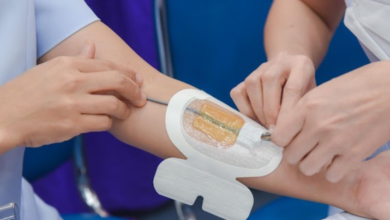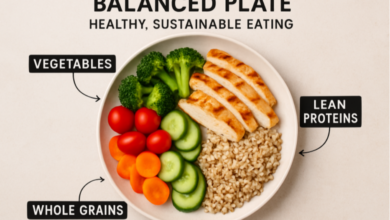Exploring the Structure and Function of Medical Syringes

Introduction
Medical syringes are indispensable tools in healthcare settings, used for administering medications, vaccines, and extracting fluids. Each component of a syringe has a specific role, making it essential for healthcare professionals to understand the structure and function of these devices. Proper knowledge ensures safety, accuracy, and efficiency in medical procedures.
Core Components of a Syringe
Understanding each part of syringe is crucial to ensuring correct usage and maintaining sterility.
Barrel
The barrel is the main cylindrical chamber that holds the fluid. Marked with precise measurements, it allows medical professionals to accurately administer doses. Its transparency or semi-transparency helps monitor the contents and detect air bubbles before injection.
Plunger
The plunger fits snugly inside the barrel and moves smoothly to draw in or push out liquid. The plunger tip has a rubber or silicone seal that ensures a tight fit, preventing leakage and maintaining accurate dosing.
Needle
The needle is a hollow, pointed metal component that facilitates fluid transfer through skin or other barriers. Needle specifications, such as length and gauge, are chosen based on the injection type and patient comfort. The attachment of the needle to the syringe is a critical part of syringe design.
Tip Connection
The tip connection links the barrel to the needle. There are different designs such as Luer lock and slip tip. Luer lock tips provide a secure twist-on fit for the needle, while slip tips allow for easy removal. This part plays a significant role in preventing leaks or accidental detachment.
Safety Mechanisms
Many modern syringes incorporate safety part of syringe mechanisms to reduce needlestick injuries. These include retractable needles, protective caps, and auto-disable features. Understanding the location and function of these features is essential for safe practice.
See also: Mastering Medical Billing Workflows A Complete Guide for Healthcare Practices
Variations in Syringe Design
Different types of syringes serve distinct medical purposes, and recognizing the parts of syringe in each type is vital.
Standard Syringes
Used widely in hospitals and clinics, these syringes feature a conventional barrel, plunger, and needle. Knowledge of each part ensures accurate medication administration.
Insulin Syringes
Designed for subcutaneous injection, insulin syringes have finer needles and smaller barrels. Familiarity with the parts of syringe is important for precise insulin delivery.
Prefilled Syringes
These syringes come preloaded with medication, reducing preparation time and minimizing contamination risk. The barrel, plunger, and tip connection are optimized for safety and efficiency.
Specialized Syringes
Certain applications, such as tuberculin or allergy testing, require narrow barrels and precise measurement markings. Understanding the parts of syringe helps healthcare providers perform these procedures accurately.
Significance of Knowing Syringe Components
Accurate Medication Administration
Knowledge of the barrel markings, plunger mechanics, and needle specifications ensures precise dosing. Mistakes in measurement can lead to serious patient complications.
Safe Injection Practices
Awareness of all parts of syringe, including safety mechanisms, minimizes the risk of contamination and accidental injuries.
Laboratory Usage
In laboratory settings, syringes are used for sample collection and chemical transfer. Understanding the structure ensures correct handling and accurate measurements.
Patient Comfort and Care
Proper needle selection and injection technique, guided by knowledge of syringe components, reduce patient discomfort and improve compliance.
Handling and Maintenance
Safe handling and maintenance are key to ensuring the longevity and sterility of syringes:
- Always use sterile syringes for injections or sample collection.
- Inspect each part of syringe for defects before use.
- Avoid recapping needles to prevent accidental injuries.
- Dispose of used syringes in designated sharps containers.
Following these steps, combined with knowledge of each component, protects both patients and healthcare professionals.
Recent Innovations
Modern syringes incorporate innovations that improve safety and usability:
- Safety syringes: Features like retractable needles reduce injuries.
- Prefilled designs: Minimize preparation errors and contamination risk.
- Ergonomic enhancements: Improve grip and smoothness of the plunger for easier use.
Familiarity with the parts of syringe ensures these benefits are fully utilized in clinical practice.
Training and Education
Visual aids and diagrams illustrating the parts of syringe are invaluable in medical education. They:
- Allow trainees to practice without patient risk.
- Improve understanding of correct injection techniques.
- Reduce errors in dosing and handling.
Integrating these learning tools into training programs enhances competency and confidence in healthcare settings.
Conclusion
Understanding the part of syringe is fundamental for healthcare professionals. From the barrel and plunger to the needle and tip connection, each component plays a critical role in ensuring accurate, safe, and efficient fluid administration. Proper knowledge, combined with safe handling and modern innovations, protects patients and enhances the quality of care. Awareness of these components is equally important in hospitals, clinics, and laboratory settings, emphasizing the universal relevance of syringe education.




